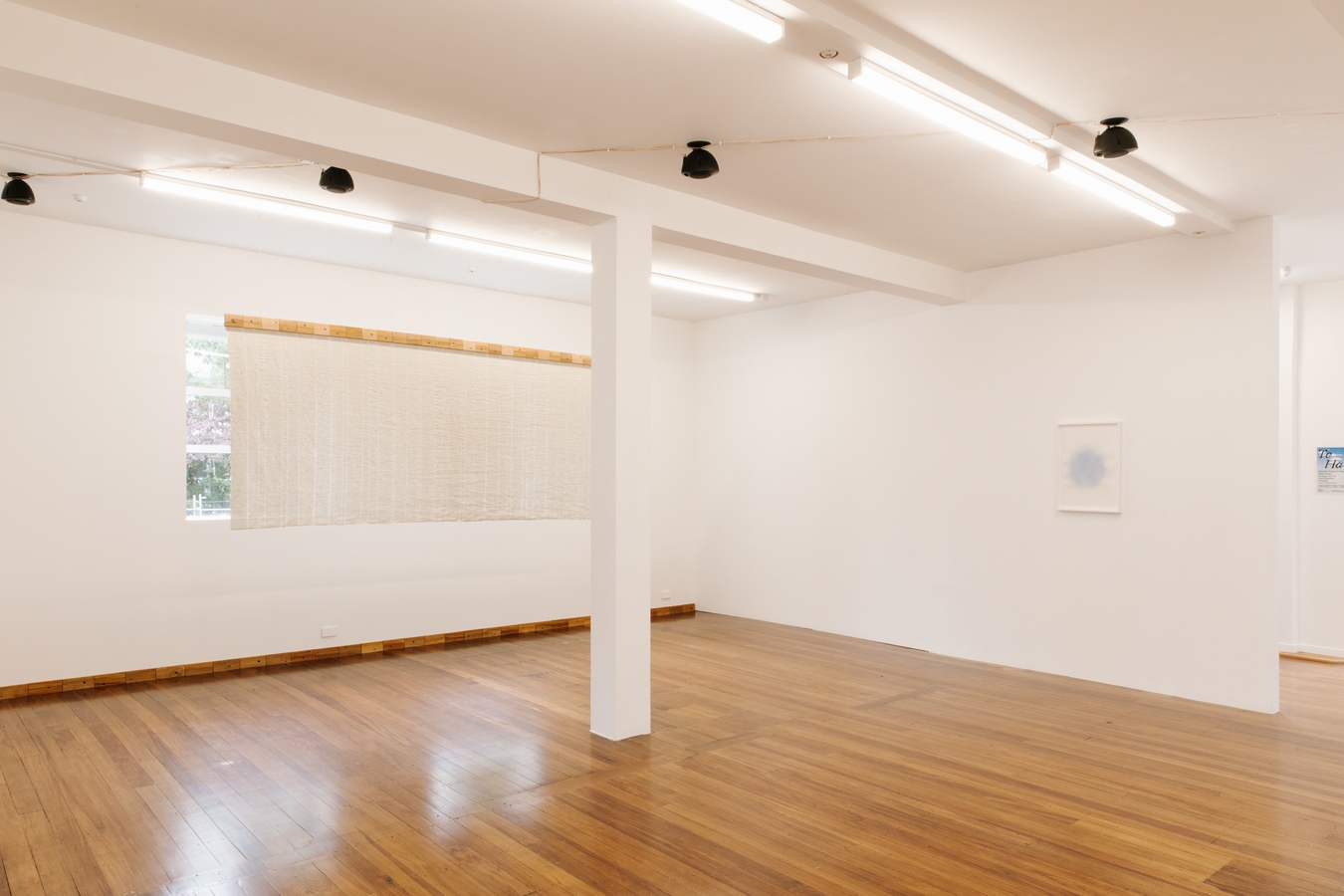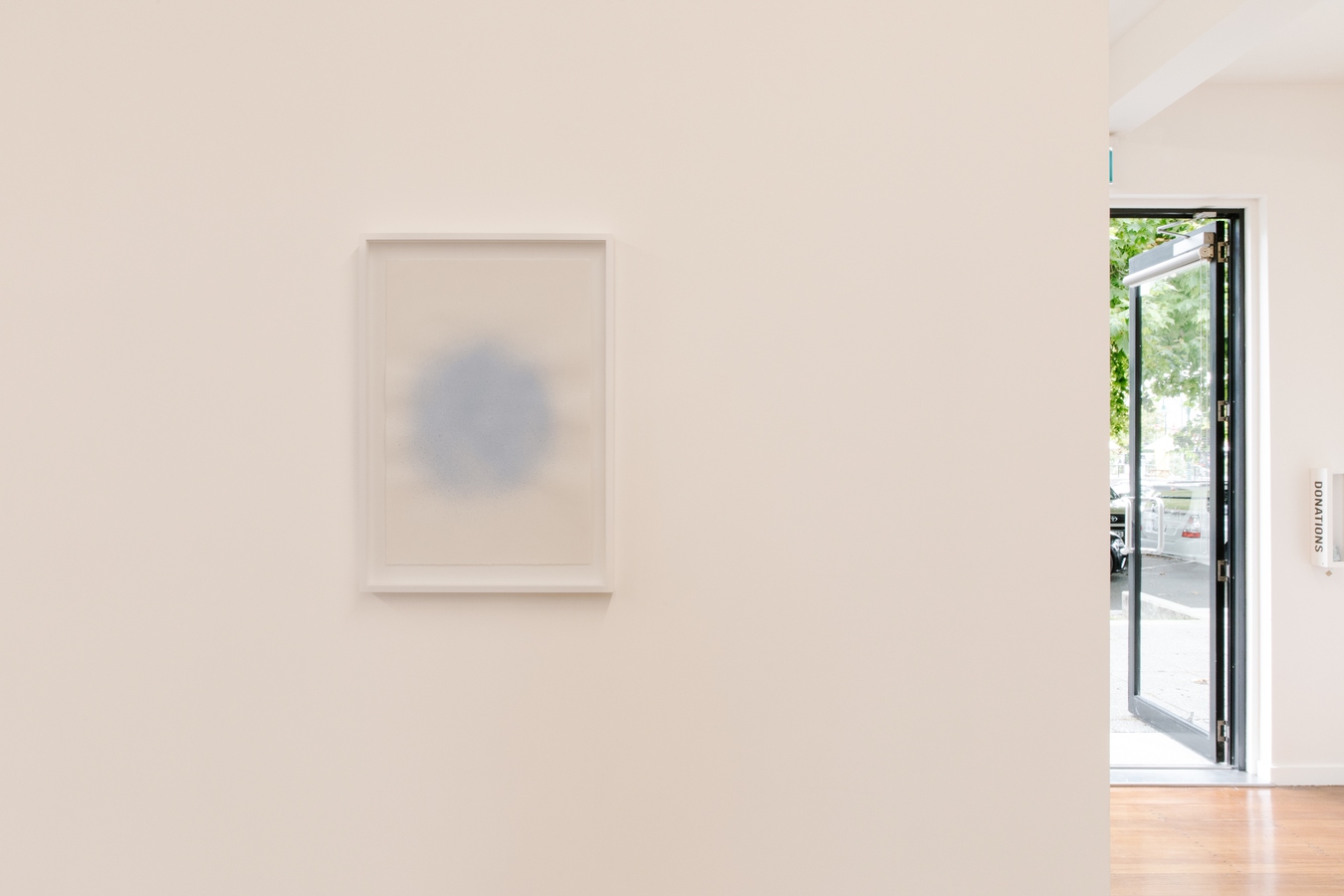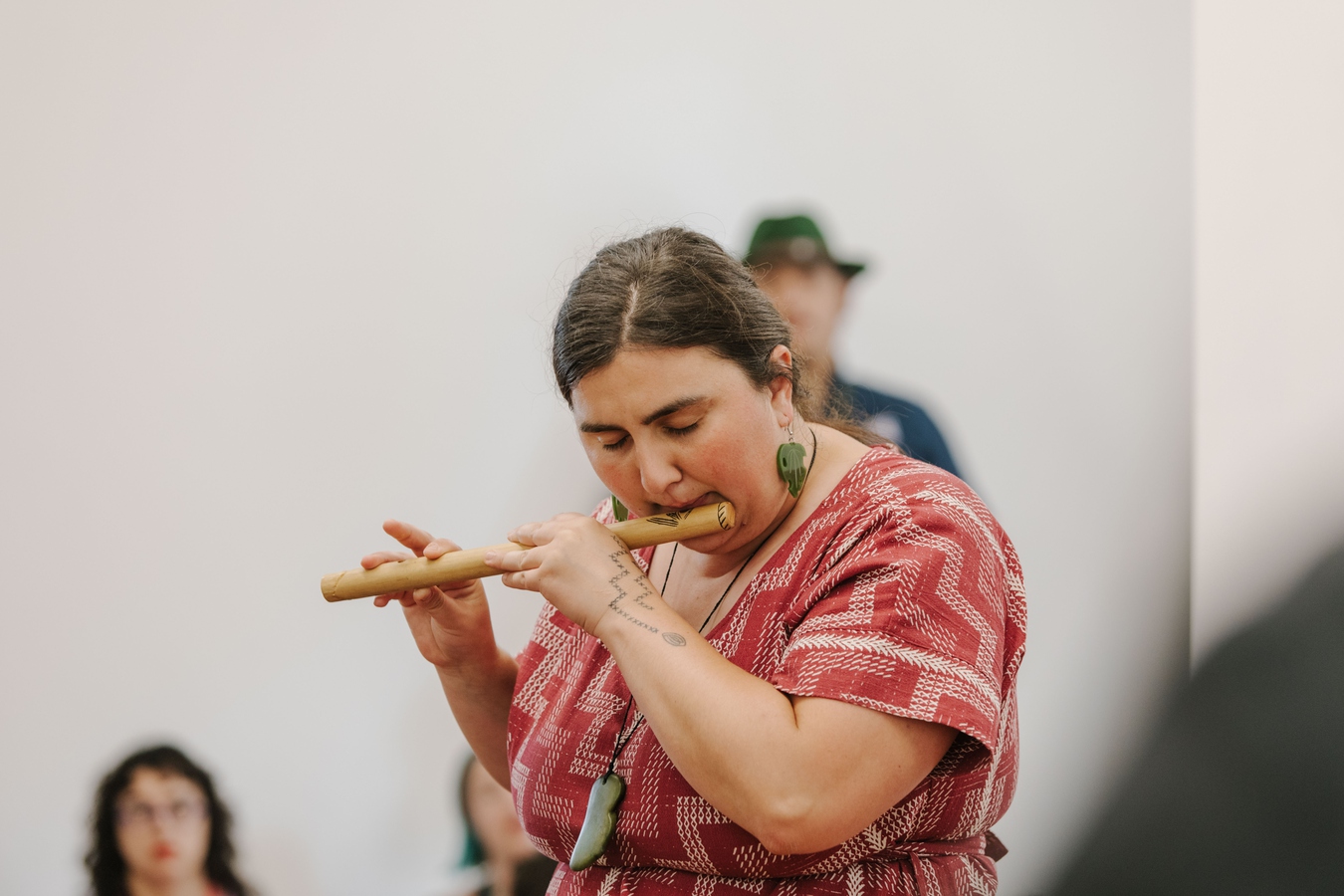Megan Brady, Kiringāua Cassidy, D Harding, Ruby Mae Hinepunui Solly, Areta Wilkinson
Te Hā
27 Jan — 03 Mar 2023
Te Hā
Megan Brady, Kiringāua Cassidy, D Harding, Ruby Mae Hinepunui Solly, Areta Wilkinson
Curated by Taniora Tamati Rakete
Exhibition runs: 28 January – 03 March 2023
Whakatau and preview: from 5:30pm, Friday 27 January
Performance by Ruby Mae Hinepunui Solly: 5:45pm, Friday 27 January
Wā and its counter-colonial possibilities: Implications for the human self, a lecture by Dr. Carl Mika: 2pm, Saturday 28 January
Tihei mauri ora, the first sneeze of life vibrates into space, and human existence is claimed. The exhibition Te Hā considers the sacred breath. Mātauraka Kāi Tahu is central in the formation of this exhibition kaupapa. Te hā is transferred through the spoken words of Kāi Tahu rangatira Teone Taare Tikao, recorded by historian Herries Beattie (Tikao Talks, 1939). Tikao’s account explains the source of the winds, through the marriage of Maui’s grandfather Mahuika, the atua of fire, and Hine-pu-nui-o-toka who holds te pū o te hau: the source or power of the winds.
In this exhibition, Dr. Areta Wilkinson and D Harding are represented by existing works; Megan Brady, Ruby Mae Hinepunui Solly and Kiringāua Cassidy have been commissioned to make new works. Curator and Toi Māori Intern Taniora Tamati-Rakete (Te Ātiawa, Kāi Tahu, Ngāpuhi) invokes te hā as an expression of surprise, and one of interconnectedness. Both the premise and artworks in this exhibition are founded in Māori or indigenous knowledge and are enduring expressions of hauora, vitality and connectivity.
Areta Wilkinson’s (Kāti Irakehu, Te Hapū o Ngāti Wheke, Ngāi Tūāhuriri) Untitled works comprise a series of porcelain pieces formed from the back and palm of the artist's hand, alongside thin reed-like paper and clay straws. The artist describes the works as maquettes exploring Māori concepts of spirituality. Hau is described by Tikao as, “applied to the spirit of a person, which is like a wind or breath coming out of their inner being”. Tikao talks about spirit in life and in death, explaining, “the body dies and the soul passes on to the other side”. This spoken account is one text but an endnote by Herries Beattie reveals the non-verbal gestural communique by Tikao who flips his hand to illustrate his meaning. These pieces by Wilkinson explore the words and world of her tīpuna are animated by the warm body. The sacredness of life is acknowledged through hands, lips and breath. Originally made as part of Wilkinson’s 2003 artist residency at Banff Centre in Alberta, Canada, here they are shown publicly for the first time.
First Nations Australian artist D Harding (Ghungalu, Bidjara, and Garingbal peoples) employs the breath as a method of applying pigment to surfaces: walls, glass, paper, to create contemporary works. Harding draws this methodology from indigenous Australian rock art which is still undertaken by their family today. D’s work, Three light blue breaths (2022) uses ultramarine, made from lapis lazuli and terra verde, green earth pigments, that they have ingested and then expelled by the breath onto paper. This work follows earlier ‘breath’ works by Harding: Three pink breaths (2021) that used ochres sourced from the country the artist belongs to and Three blue breaths (2018) which used Reckitt’s Blue, a laundry whitening product linked to the domestic labour that generations of their female ancestors were forced into through colonial government policy. Harding’s work and its association with Australian rock art connects with South Island rock art, a significant Ngāi Tahu art form and one of the earliest in Aotearoa.
Ruby Mae Hinepunui Solly (Kāi Tahu, Kāti Māmoe, Waitaha) has created He Aho Tapu, He Aho Hā (2023), a sound work for five speakers using taoka pūoro, Māori instruments of sound, and voice. Solly writes, “Music, sound, and the places they touch, are invisible records of our existence, survival, and connection to our tīpuna and mokopuna. From the world first being sung into being, to the first breath of Hineahuone, to the chants that helped bring our waka to these shores, Hā has woven the whāriki of sound that keeps us in place on our lands. Oro and waiata are how we have passed on our whakapapa and mātauraka since that first breath that we can all whakapapa to, and oro has given us the ability to make the taoka we wish to pass on both beautiful, and invisible. Hā has kept us safe, hā has kept us alive.”
Kiringāua Cassidy (Kāi Tahu) presents a text-based work for the exhibition. In Cassidy’s words, “This written piece talks about te reo Māori, specifically te reo Kāi Tahu… It draws from the metaphor of breath, and on a larger scale, wind and its many forms… the intricacies of the language as strong gusts and stormwinds, and also as calm, light breezes. Fire was used as a metaphor for the language… using breath to speak the language is like using oxygen to ignite and maintain a fire, it is one of the most necessary components. It talks of the highs and lows of life and how unwavering one should be, like the mountain Aoraki in all aspects of life. The same question is asked at the beginning and end, with the concluding answer that this wind is the breath of the eponymous ancestor Tahu Pōtiki, from which te reo Kāi Tahu finds its origins.”
Megan Brady’s (Kāi Tahu, Ngāi Tūāhuriri, Pākehā) work She looks down to find my eyes (2023) explores the ebb and swell of the tides, as if the sea itself is breathing. This sculptural work is made out of found glass and other items washed up on the beach shore and collected by the artist, who writes, “The big pattern is our tides: the oceans breathe. The tide leaves, a prolonged inhale. The tide returns, filling every little crack and cove, a settling exhale. This is a pattern I have known my whole life, but only in recent years have I begun to understand it in such closeness to my own breath. Perhaps this is due to living close to the water again, the first time since I left home.” Rimu timber skirting in the gallery space holds pieces of blue glass from the artist’s mother’s collection. The skirting asks the viewer to lower their gaze as if looking, scanning, moving along the shoreline too.
Tamati-Rakete seeks to emphasise connections between the breath, mental wellbeing, the spiritual and the everyday, alongside Kāi Tahu kōrero concerning te hau and te taiao. Te Hā at The Physics Room is intended as a contemplative space, a space for considering how we all connect to the breath, and back to a creation narrative that continues to sustain life.
--
Megan Brady (Kāi Tahu, Ngāi Tūāhuriri, Pākehā) is a multidisciplinary artist currently based in Ōtepoti Dunedin. Working in sculpture, installation, object making and sound, she is particularly interested in the way we navigate sites, often responding to patterns and details in the environment. Selected recent projects include Where light and footsteps fold, CoCA, mural commission, Ōtautahi, 2022; Matairaki, Blue Oyster Art Project Space, Ōtepoti, 2022; Paemanu: Tauraka Toi, Dunedin Public Art Gallery, Ōtepoti, 2021-22; and Lay in measures with Ed Ritchie, Enjoy Contemporary Art Space, Te Whanganui-a-Tara, 2021.
Ruby Mae Hinepunui Solly (Waitaha, Kāti Māmoe, Kāi Tahu, Ngāti Tiu) is a multidisciplinary artist working in Pōneke, which is also the title of her debut solo project featuring taonga pūoro, cello, and vocals, recorded in different Wellington locations in order to compose within the histories and sounds of these places. She considers te taiao as a co-composer within her work and has created sound installations working with maunga and moana, as well as the hidden histories within the oro of our whakapapa. Her first book Tōku Pāpā, a celebration of father daughter relationships in te ao Māori and Kāi Tahu, was released in 2020. An upcoming book, The Artist, is due for release in 2023. Solly is currently completing a PhD in public health, focusing on the use of taonga pūoro in hauora Māori.
D Harding is a descendant of the Bidjara, Ghungalu and Garingbal peoples, born in Moranbah and currently working in Meeanjin Brisbane, Australia. They work across a variety of media, exploring the visual and social languages of their communities as a cultural continuum. In 2022 their work was part of rīvus, the 23rd Biennale of Sydney, curated by José Roca. In 2021 the solo exhibition Dale Harding: There is no before, curated by Megan Tamati-Quennell, was held at Govett-Brewster Art Gallery, New Plymouth, Aotearoa. Harding’s work has been the subject of solo exhibitions at the Monash University Museum of Art, Melbourne (2021); Gertrude Contemporary, Melbourne (2019); Institute of Modern Art, Brisbane (2019, 2015); and Milani Gallery, Brisbane (2016, 2017, 2018, 2019). Their work has also been included in group exhibitions throughout Australia and overseas, including at Tate Modern, London (2021); Museum of Contemporary Art Tokyo (2020); PAC Milano, Milan (2019); Lyon Biennial, Lyon, France (2019); Sharjah Art Foundation, Sharjah, UAE (2019); Tensta Konsthall, Stockholm (2018); Liverpool Biennial (2018); TarraWarra Biennial (2018); Documenta 14, Athens and Kassel (2017); The National: New Australian Art, Art Gallery of New South Wales, Sydney (2017).
Dr. Areta Wilkinson (Kāti Irakehu, Te Hapū o Ngāti Wheke, Ngāi Tūāhuriri) has investigated over 30 years the intersection of applied art (contemporary jewellery) as a form of knowledge and practice with Māori philosophies, especially whakapapa and a worldview informed by Ngāi Tahu perspectives. Of import is elevating this knowledge through Treaty based bi-cultural methodologies as modelled by her Taua and Poua (grandparents). Areta has a strong collaborative ethos and besides making her own artwork she has collaborative projects with groups like Paemanu: Ngāi Tahu Contemporary Visual Arts, and supporting iwi agencies such as Aukaha charged with inserting Ngāi Tahu visibility into the public realm of Ōtakou. Her last solo exhibition was Moa-Hunter Fashions at Christchurch Art Gallery Te Puna o Waiwhetū (2020). Group exhibitions include: Paemanu: Tauraka Toi. A Landing Place at Dunedin Public Art Gallery, Dunedin (2021); Toi Tū Toi Ora: Contemporary Māori Art at Auckland Art Gallery, Auckland (2020); The 9th Asia Pacific Triennial of Contemporary Art, Queensland Art Gallery of Modern Art (QAGOMA), Brisbane, Australia (2018). Her work is well represented in New Zealand collections including Auckland Art Gallery Toi o Tāmaki, Tāmaki Paenga Hira Auckland War Memorial Museum and Te Papa Tongarewa Museum of New Zealand, Wellington.
Kiringāua Cassidy (Kāi Te Ruahikihiki, Kāi Te Pahi, Kāti Taoka, Kāti Moki) was born and raised in Ōtepoti Dunedin. He is a first language te reo Māori speaker, raised with te reo Māori in the home, and with his whānau continues to support kaupapa Māori across his iwi, Kāi Tahu. Cassidy is currently the youngest certified translator/interpreter of te reo Māori in the country, achieving this qualification in 2021 at the age of 17.





















